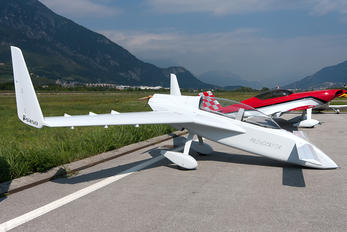SixPapaCharlie
May the force be with you
- Joined
- Aug 8, 2013
- Messages
- 16,018
- Display Name
Display name:
Sixer

Sooooooooo.......... do you need a complex endorsement? It's not really a retractable nor a fixed gear.
I'm not fond of the center stick. Like most people I'm right handed, which would make writing and flying a little challenging. Sure, you could have it on autopilot, but you won't always have it on autopilot. And it's like ATC has a camera in your plane, as soon as you are busy they have a frequency change for you.There is supposed to be an option for a side stick.
I'd like to see how well they do and how some of the things like a side stick go. Not sure that I'll ever build, but if I do the Mako would be on my list.
Set it up to be flown from the right seat instead of the left seat, then the stick will be in your left hand.
That doesn't make sense. In side-by-side aircraft, from the left seat you fly with your left hand. The throttle quadrant is still in the middle of the aircraft and is controlled with your right hand.(i.e Diamonds)I'm not fond of the center stick. Like most people I'm right handed, which would make writing and flying a little challenging.
That doesn't make sense. In side-by-side aircraft, from the left seat you fly with your left hand. The throttle quadrant is still in the middle of the aircraft and is controlled with your right hand.(i.e Diamonds)
It's only in tandem planes like cubs and citabrias that are set up to have throttle in left hand.
My mistake. I didn't know it had throttle on the sides. I assumed it was like the diamond and had the throttle in the center.Not sure what your point is. The Mako has throttles on both sides and a stick in the middle. All he would have to do is arrange the primary flight instruments on the right instead of the left. That is how my airplane is setup.
Set it up to be flown from the right seat instead of the left seat, then the stick will be in your left hand.
cause....then I wouldn't want it.Why don't they simply move the main gear forward and make it a tailwheel? Then there would be no need to retract anything.
AOPA or EAA did an article about it.....I think it was 7-10 kts.How many knots did that gain them?
Long-EZ does the same.

Set it up to be flown from the right seat instead of the left seat, then the stick will be in your left hand.
So if that was the difference between the T182 and the TRN182 then what was the speed/climb difference between the TR182 and the TRN182?. We did some performance testing, and the speed and climb differences between the standard T182 and the retractable nosegear T182 were 6-8 knots and 60 fpm, respectively.
When I see these figures, I always wonder if we’re doing an apples to apples comparison. 10-12 knots sounds right for a pant-less nose wheel compared to retracted. Cirrus is probably comparing their well faired gear with retracted. Take the fairings and pants off and it’s probably more than 10-12 knots.Apparently the speed difference is biggest for the nose wheel due to being behind the prop. That makes sense. Lancair is claiming 10-12 knots gained by retracting the nose wheel. That sounds high to me as I thought Cirrus has said that the fixed gear is less of hit than that on the SR22.
Take the fairings and pants off and it’s probably more than 10-12 knots.
...
I guess that’s why fixed gear can make sense in this class of plane.
